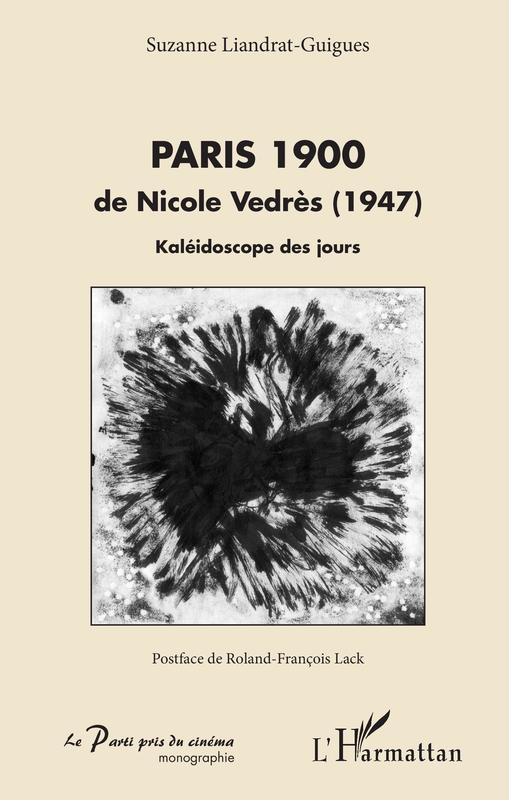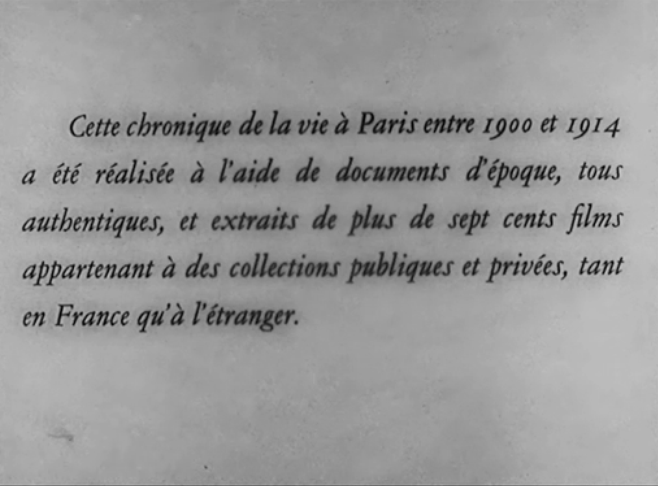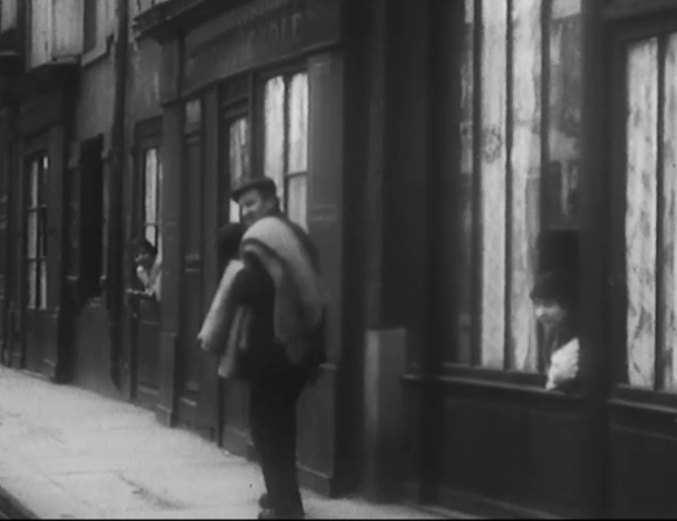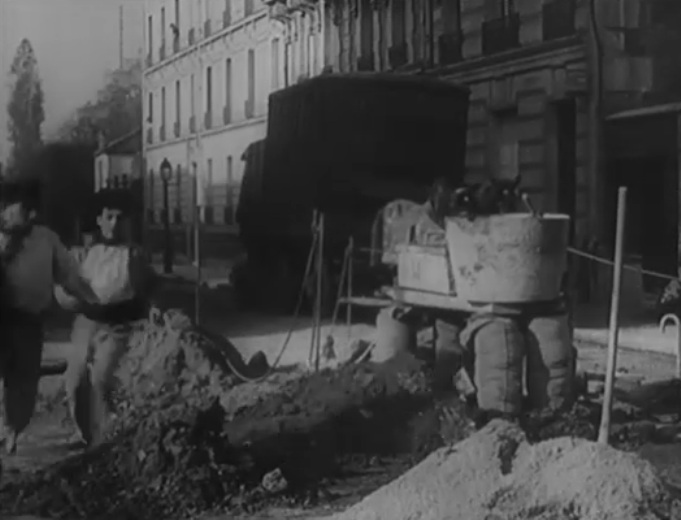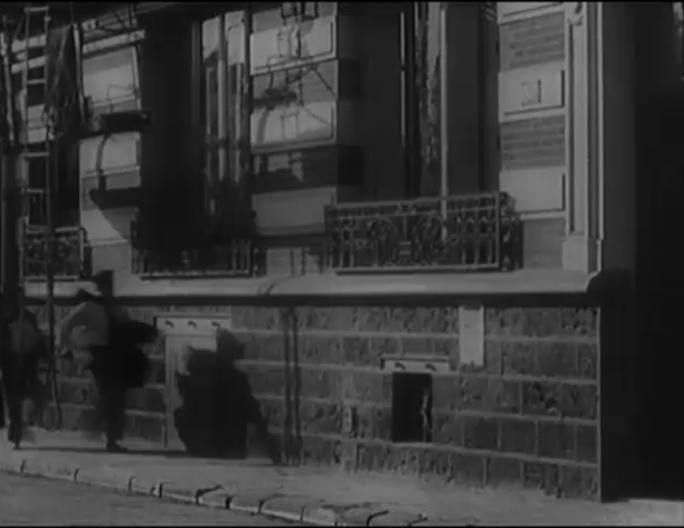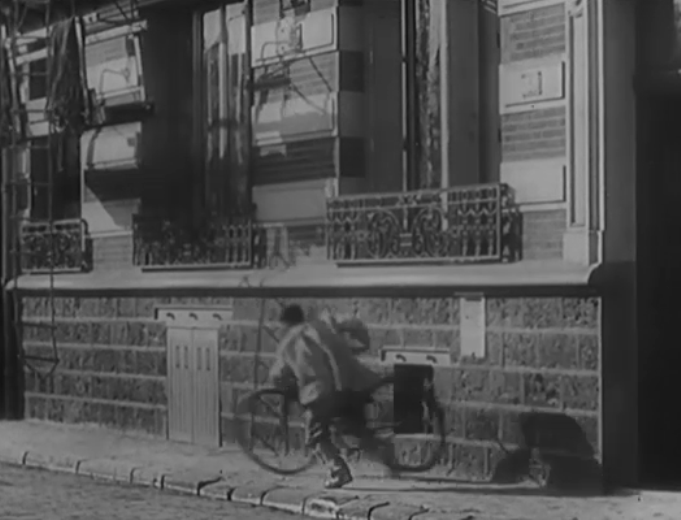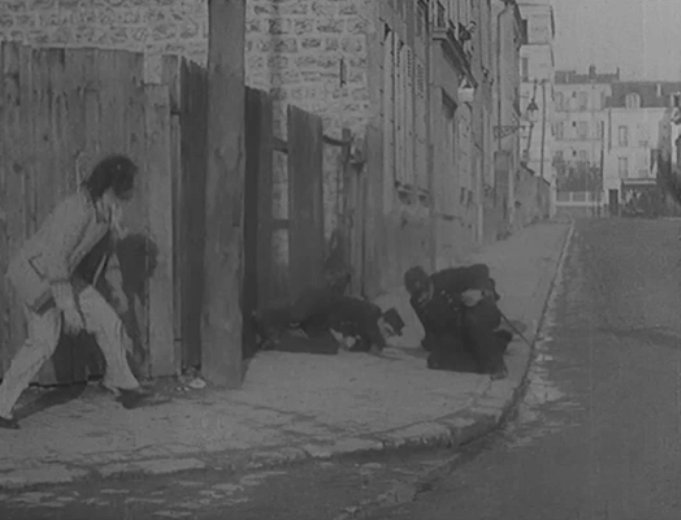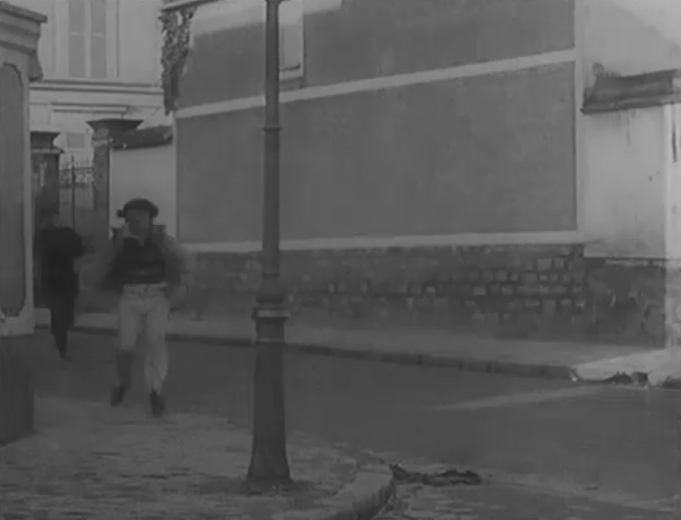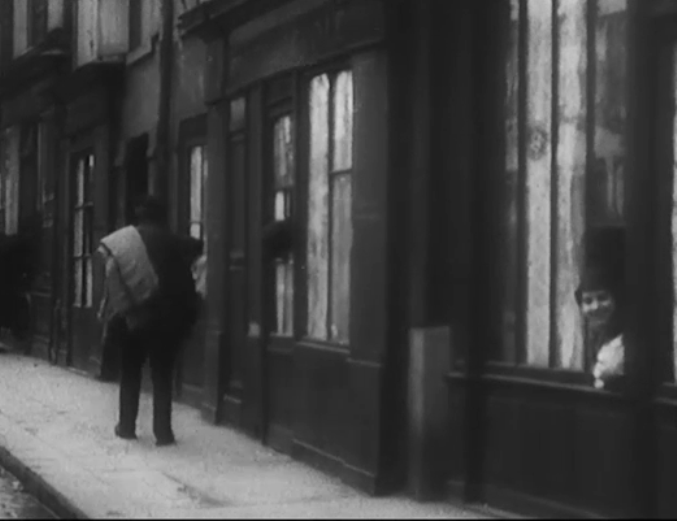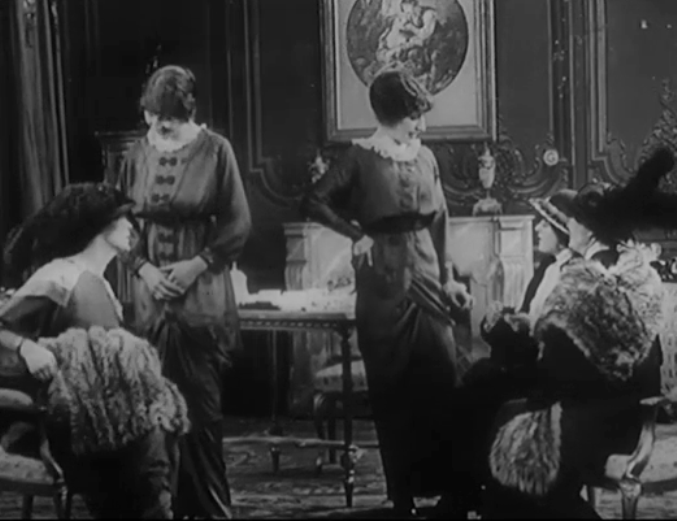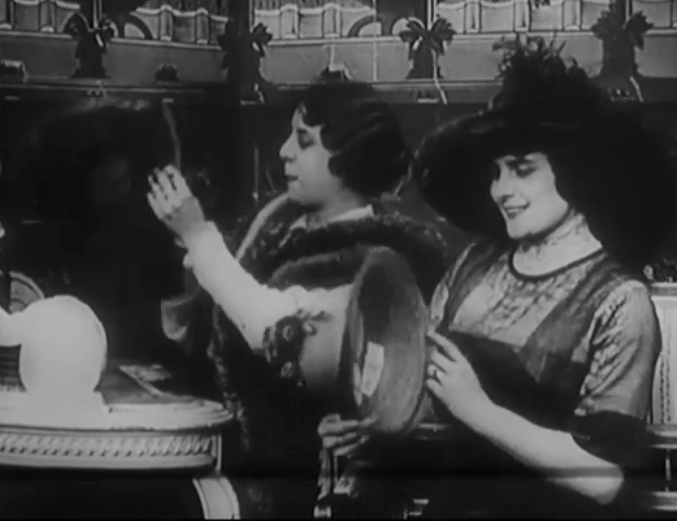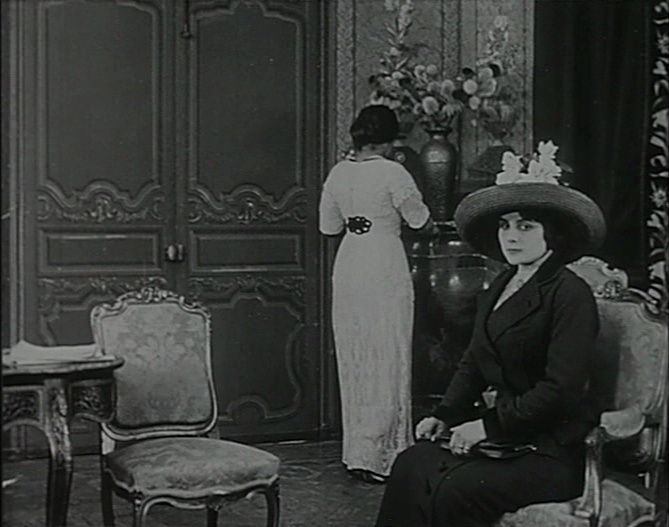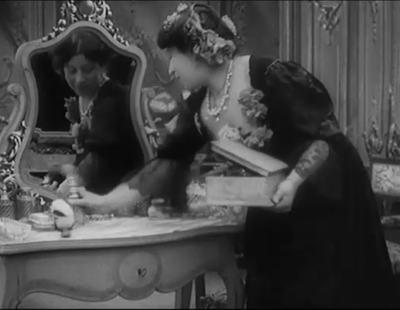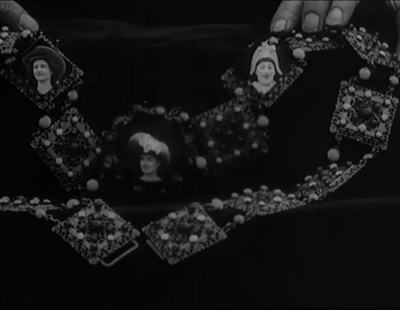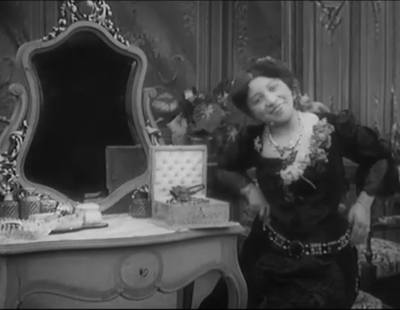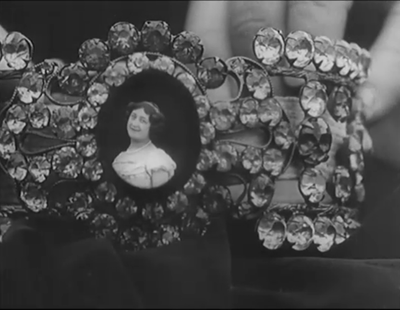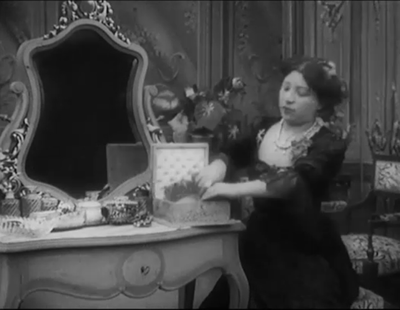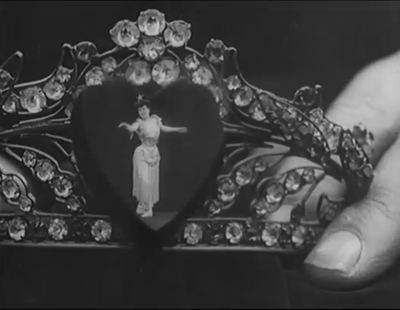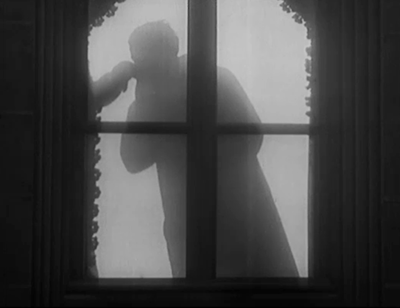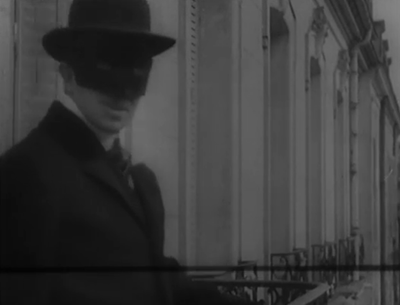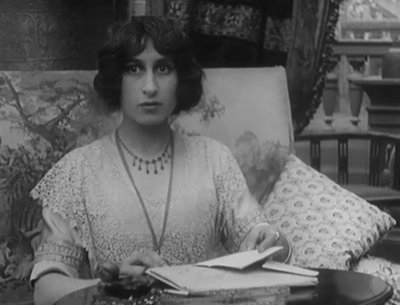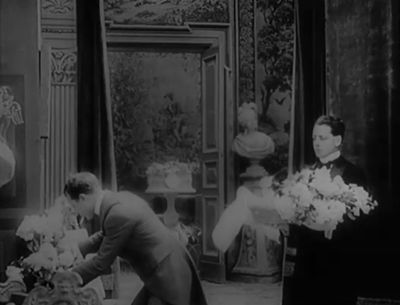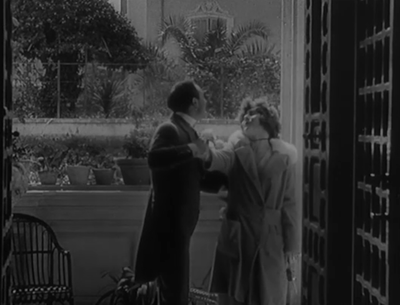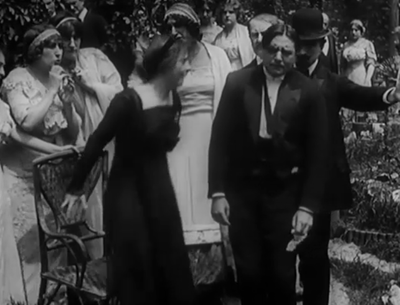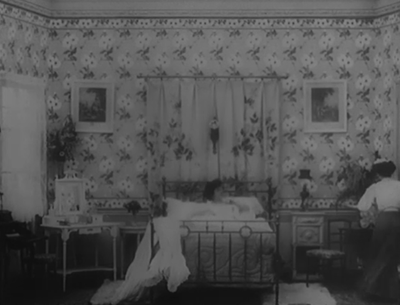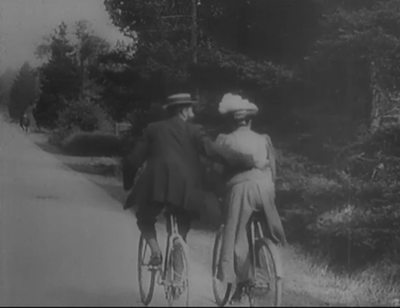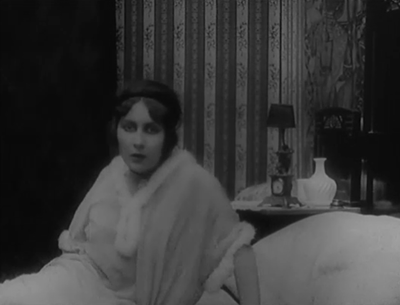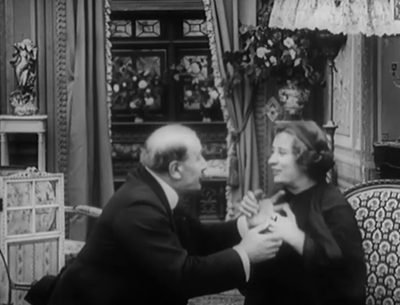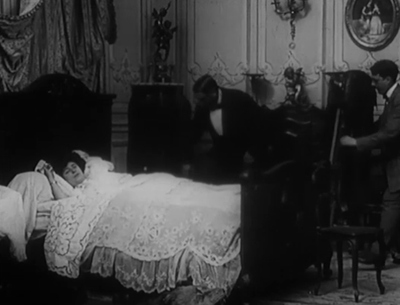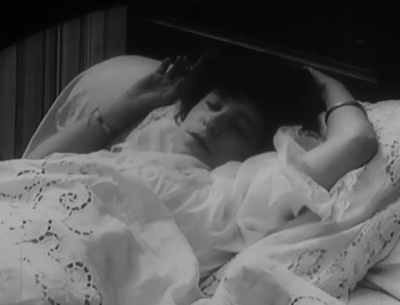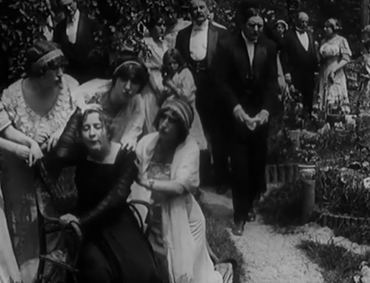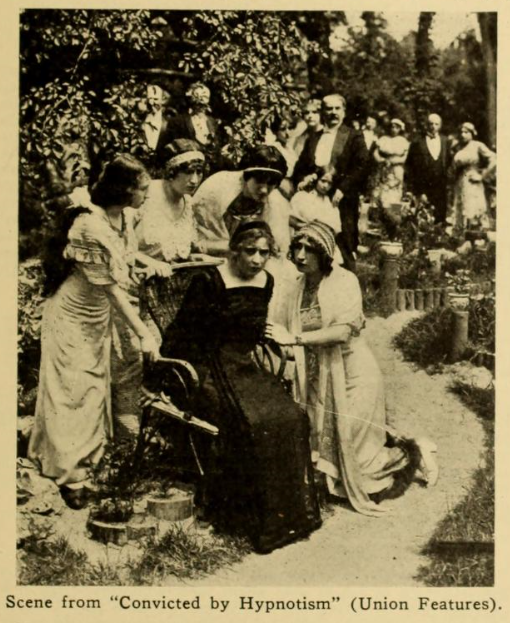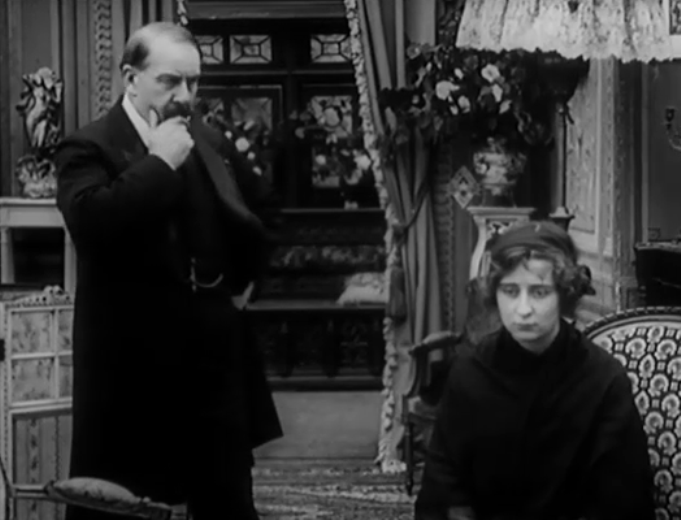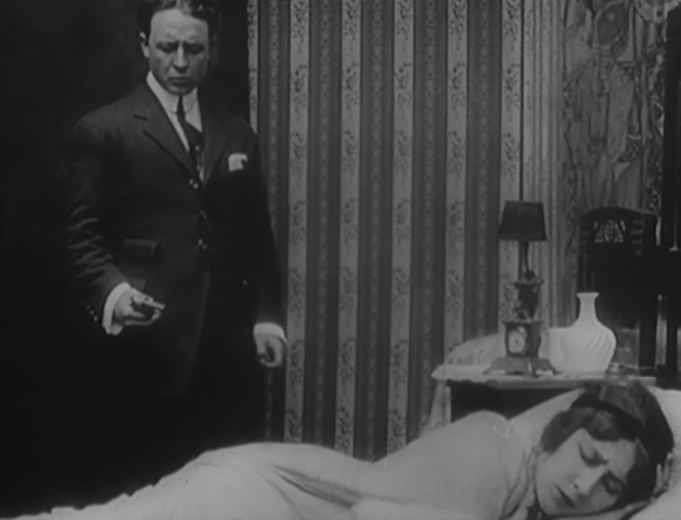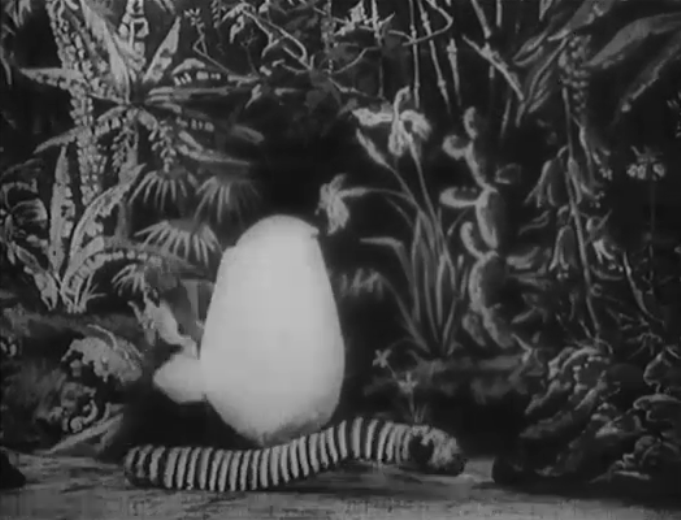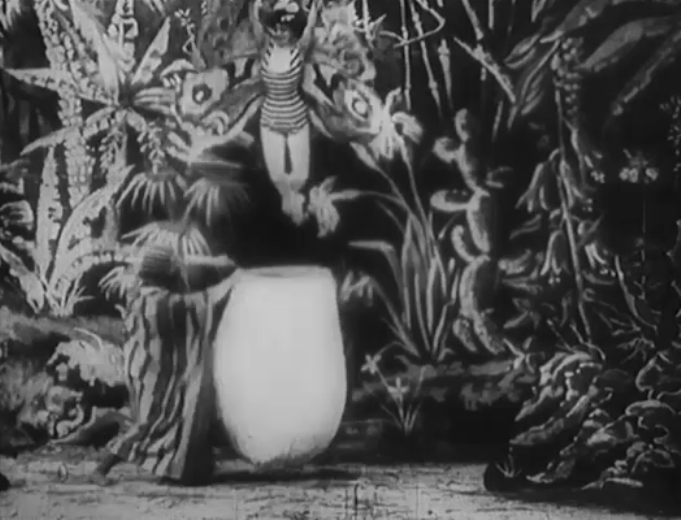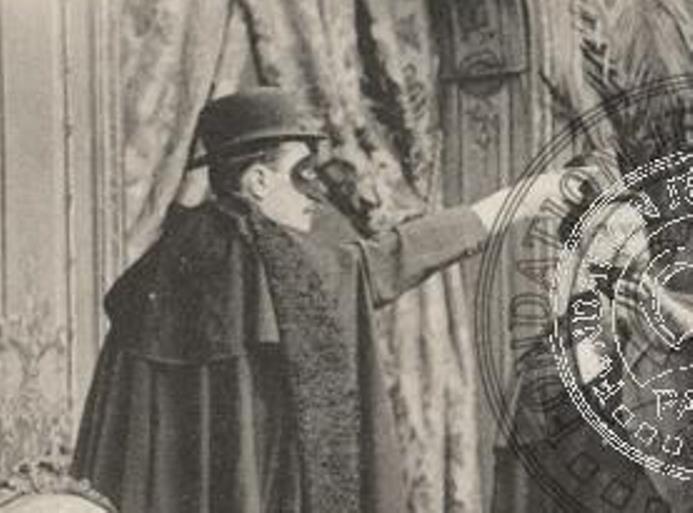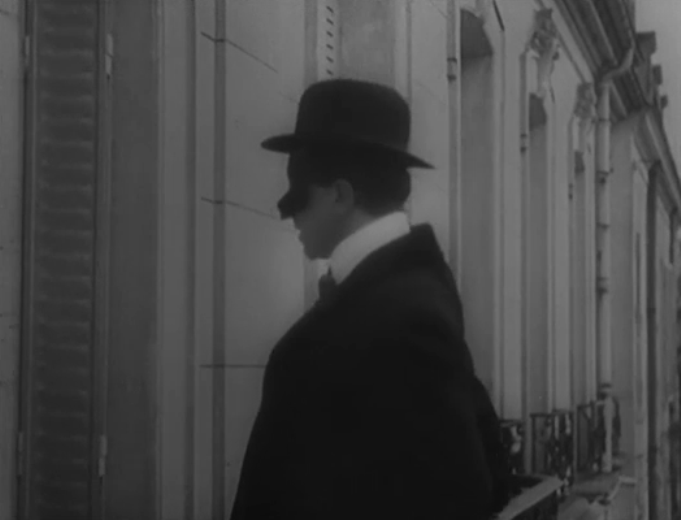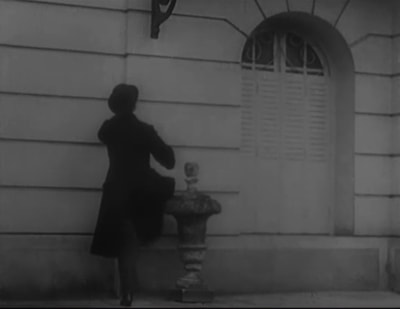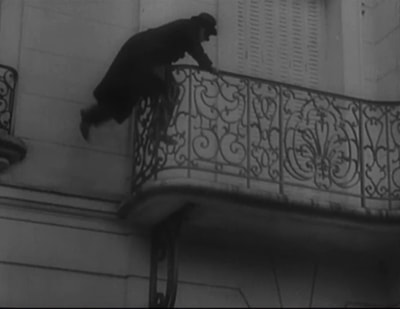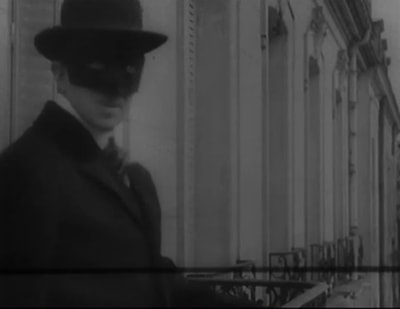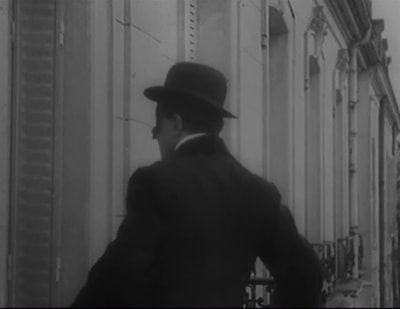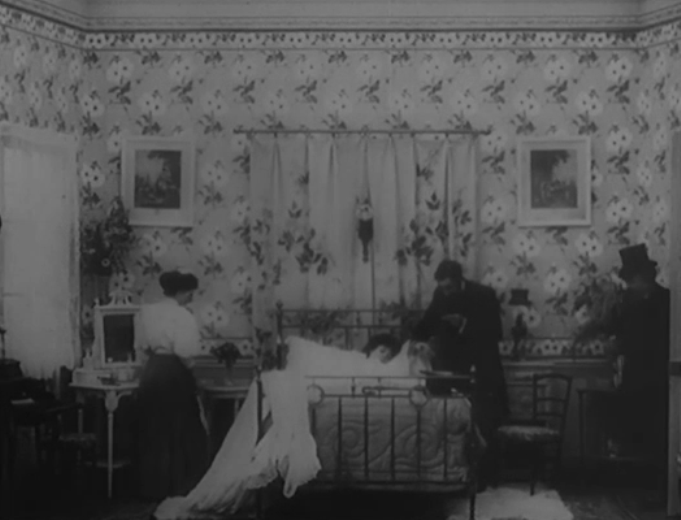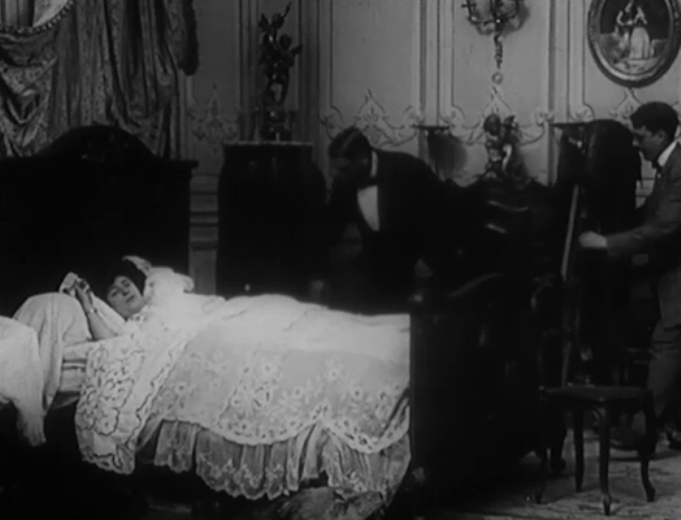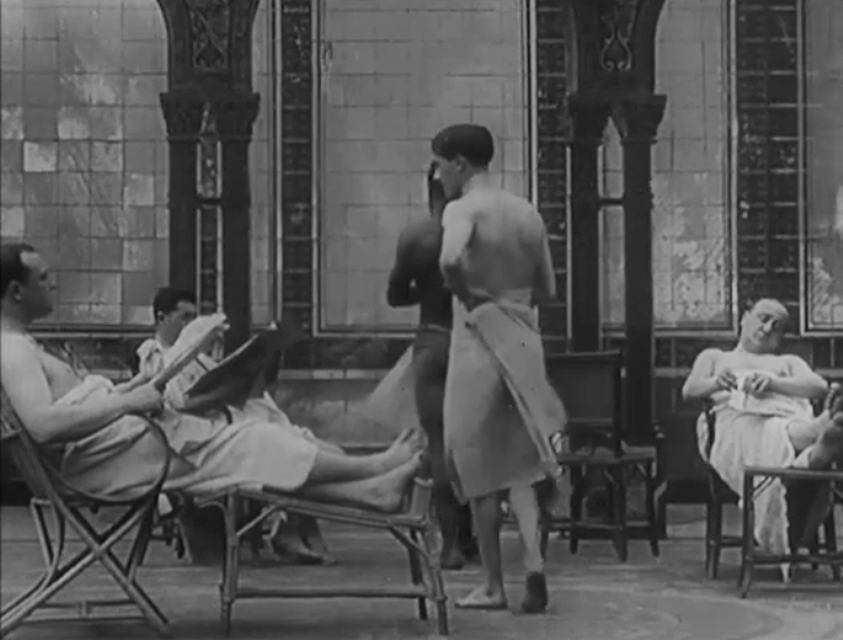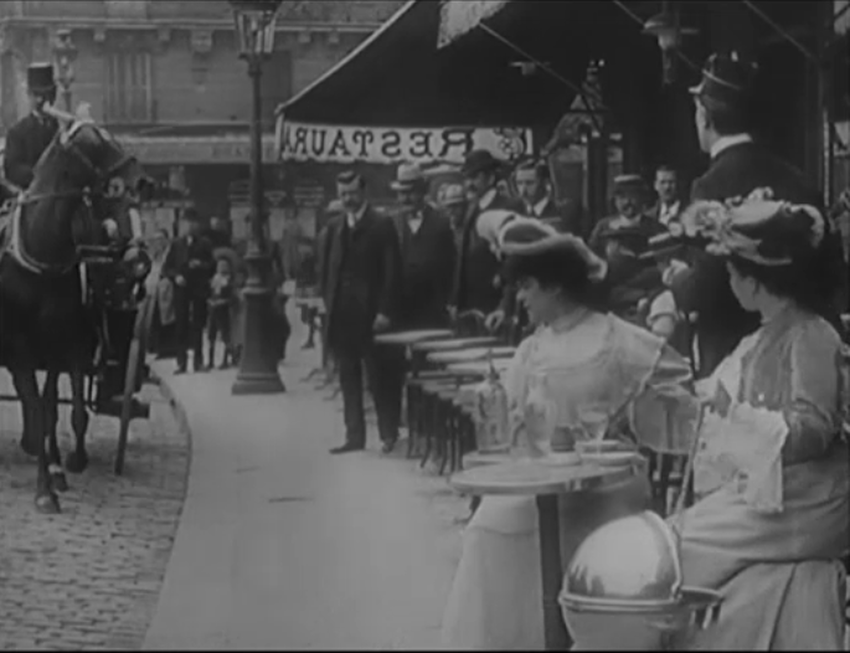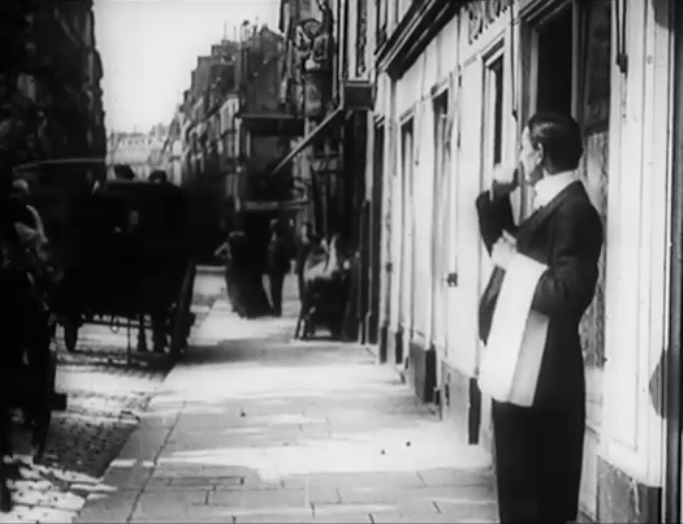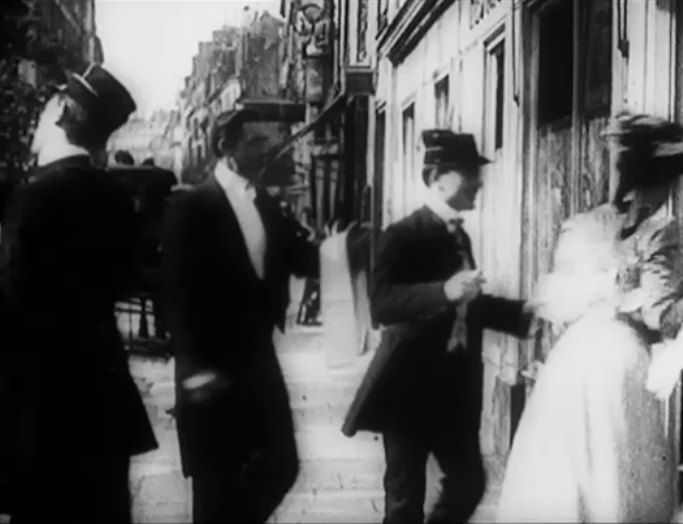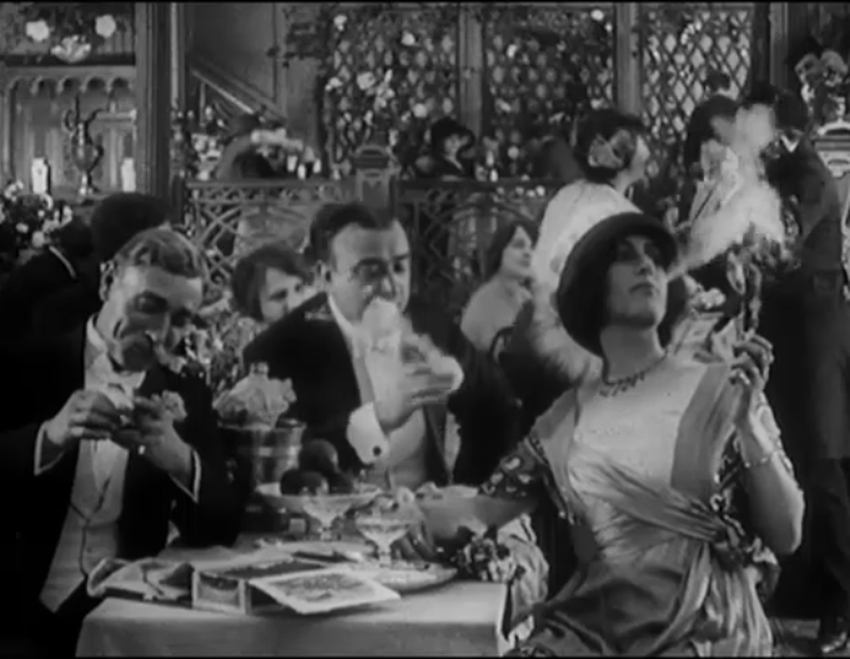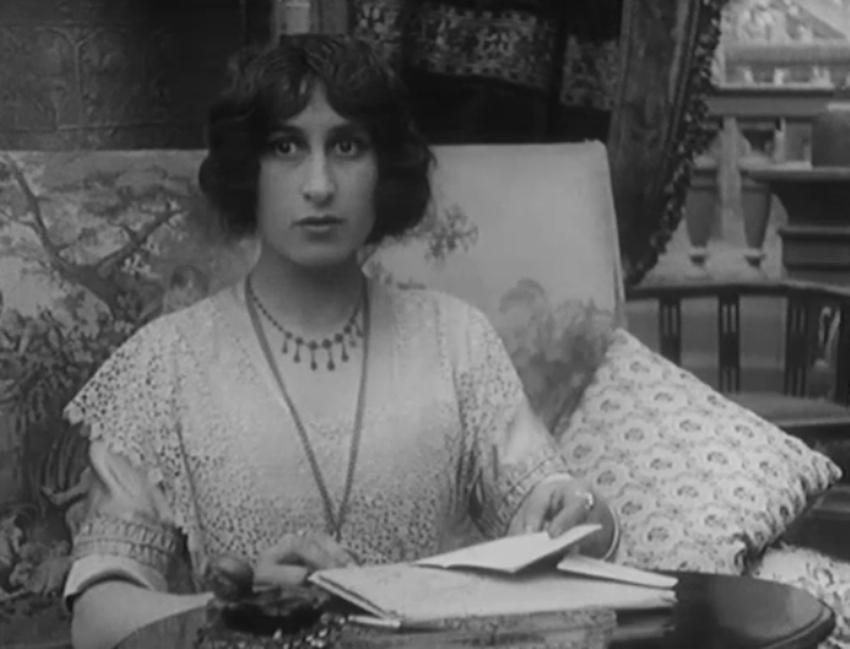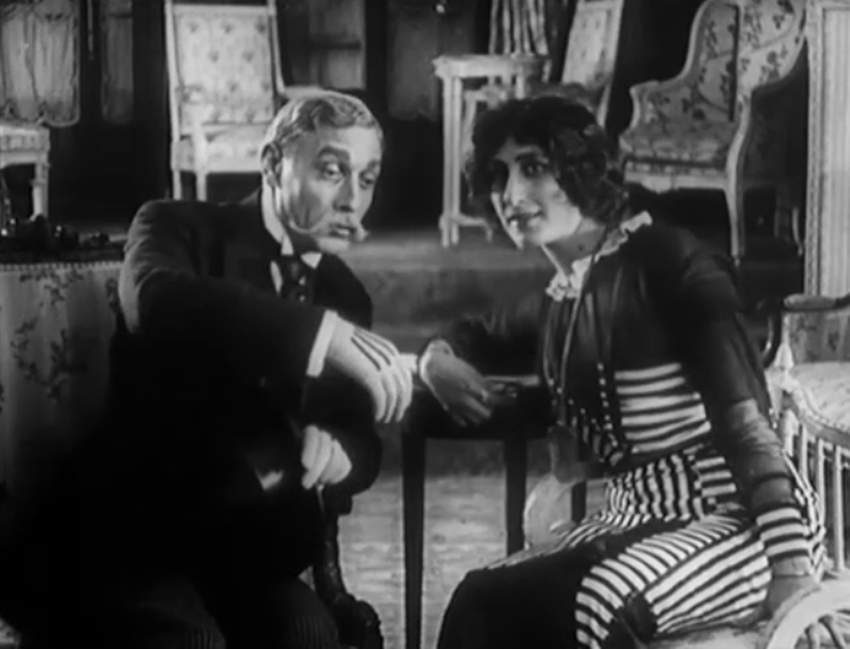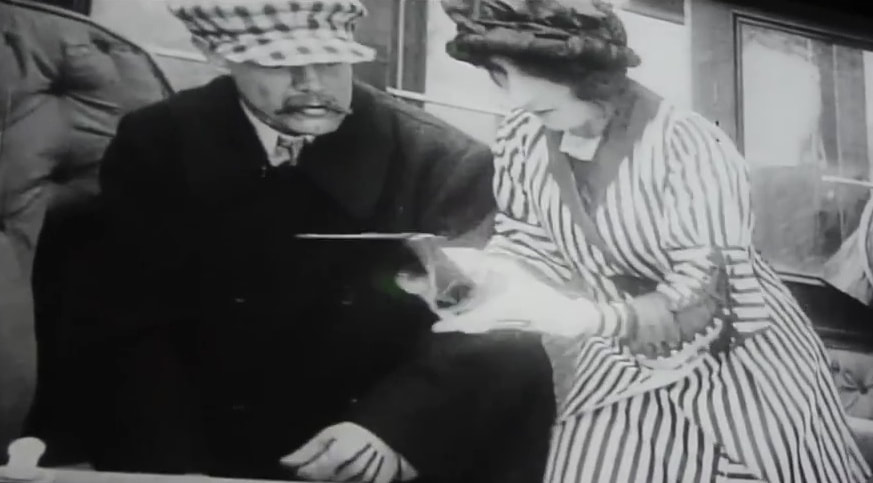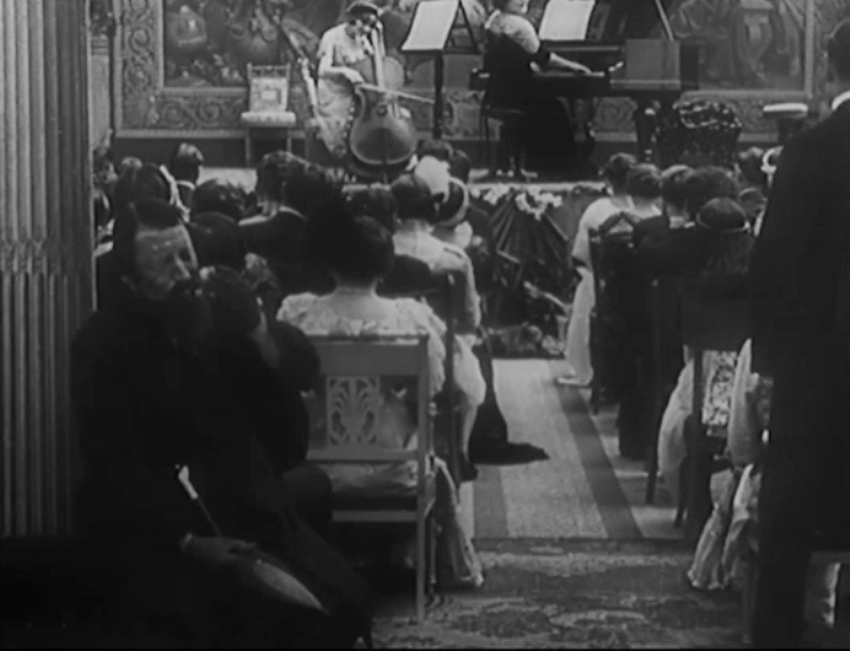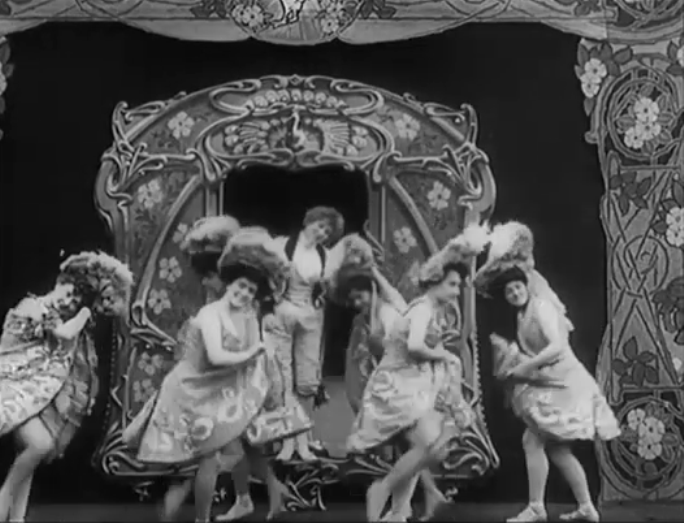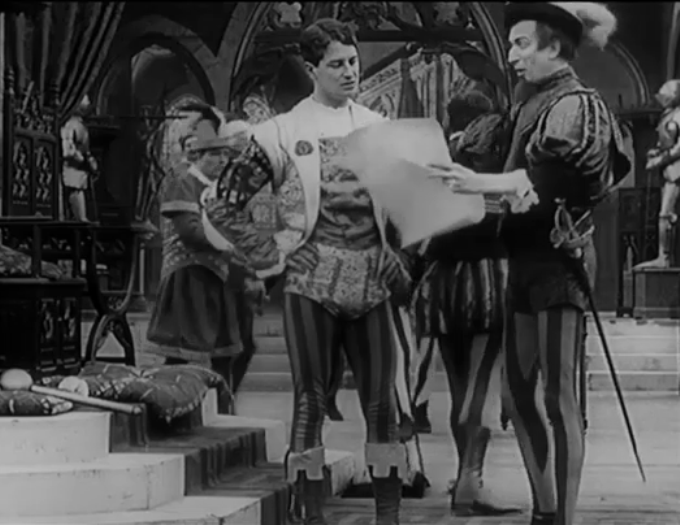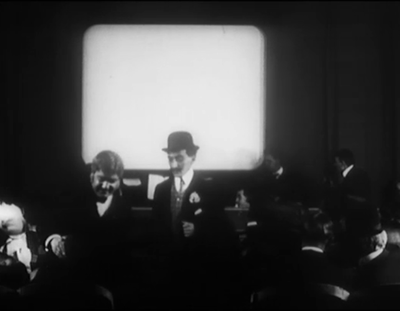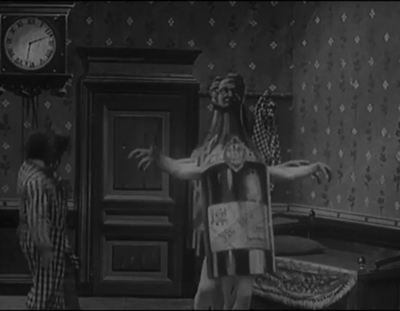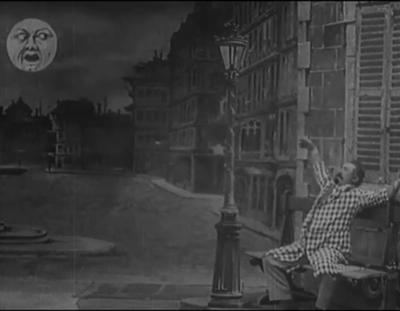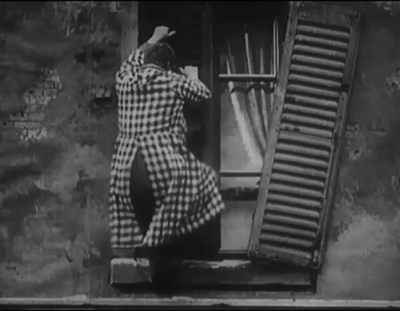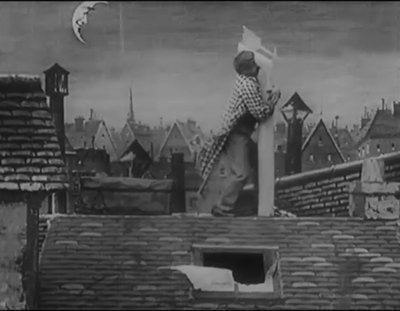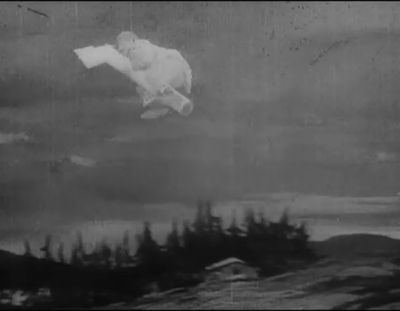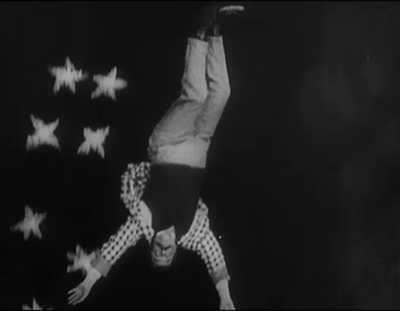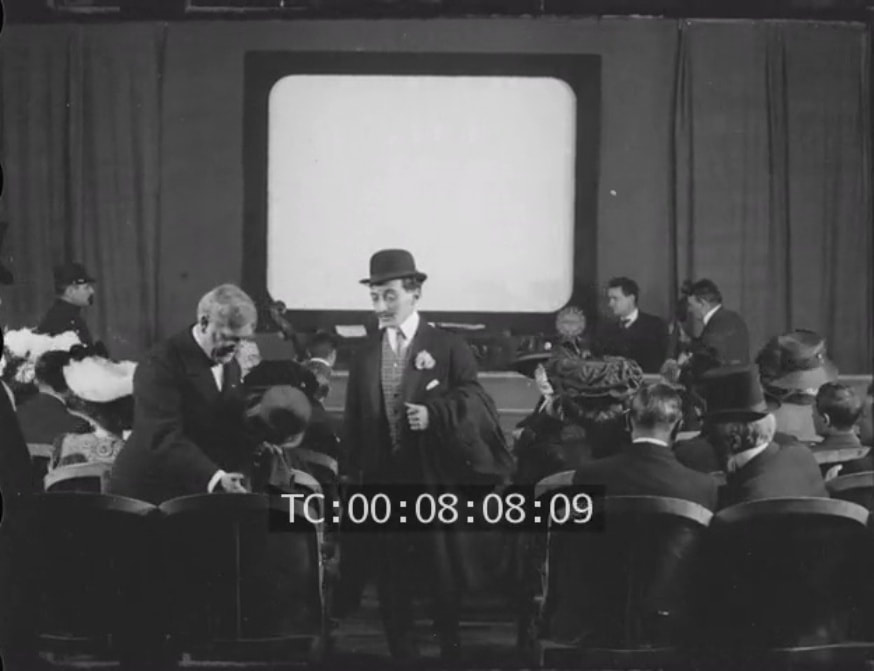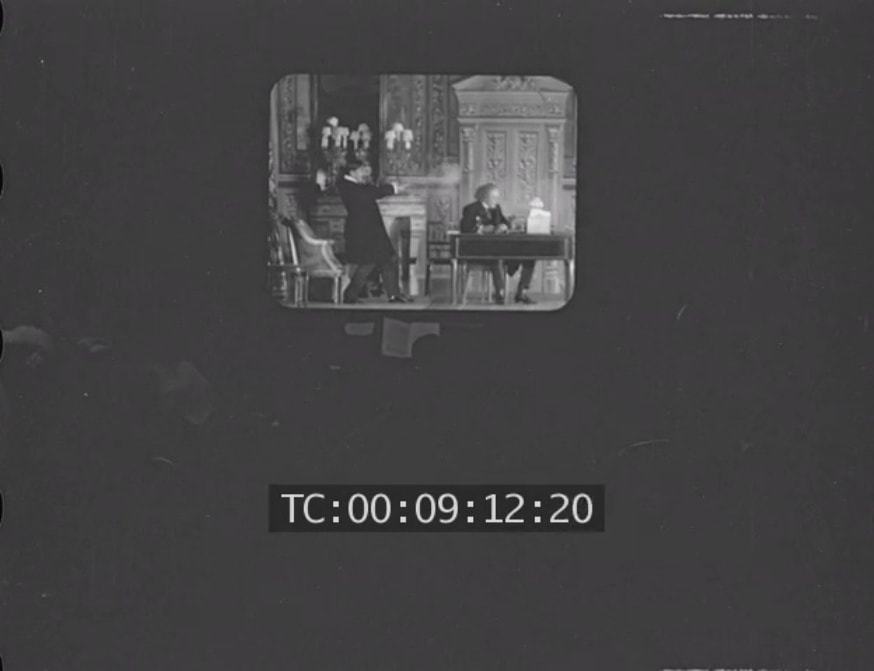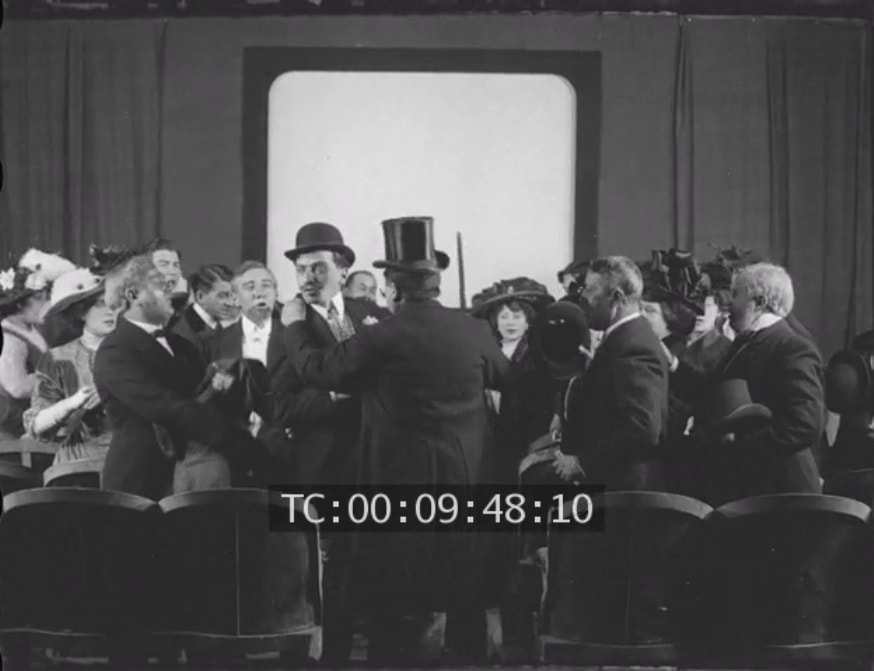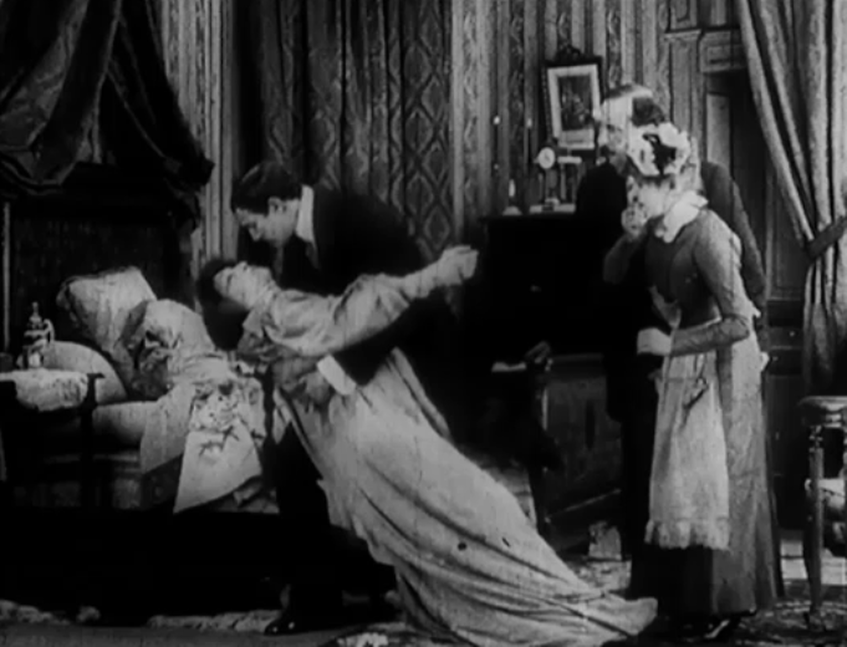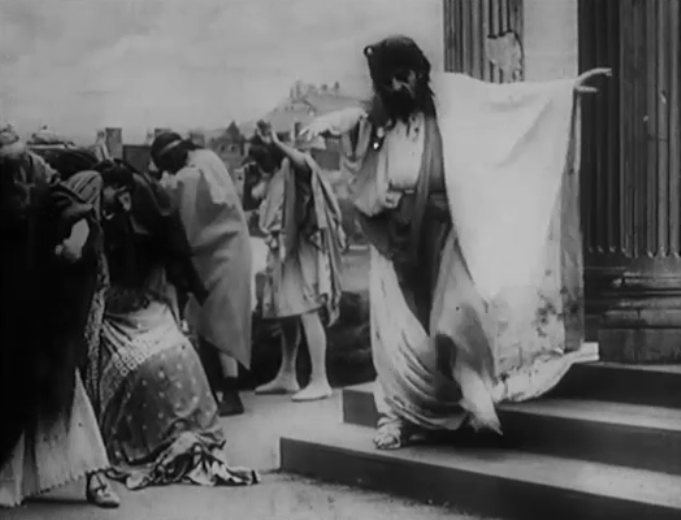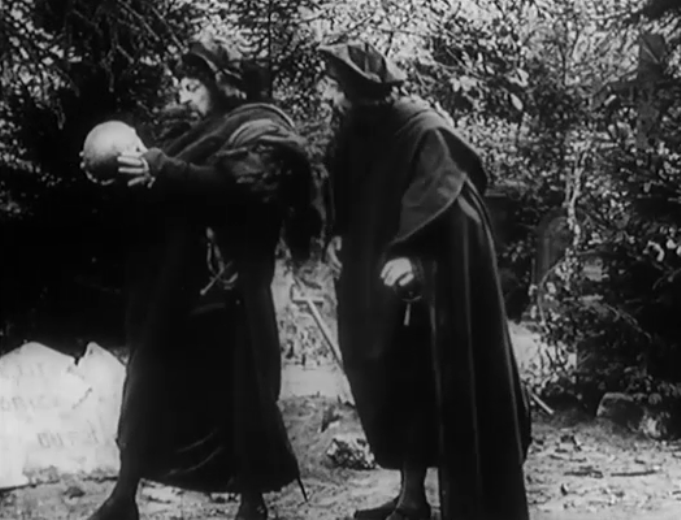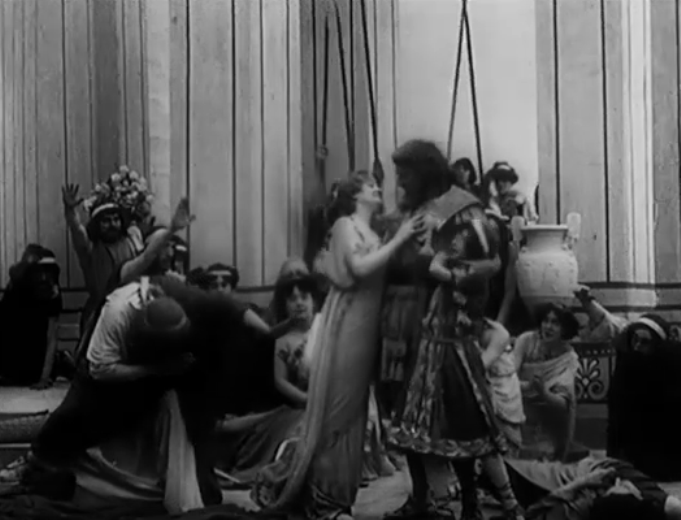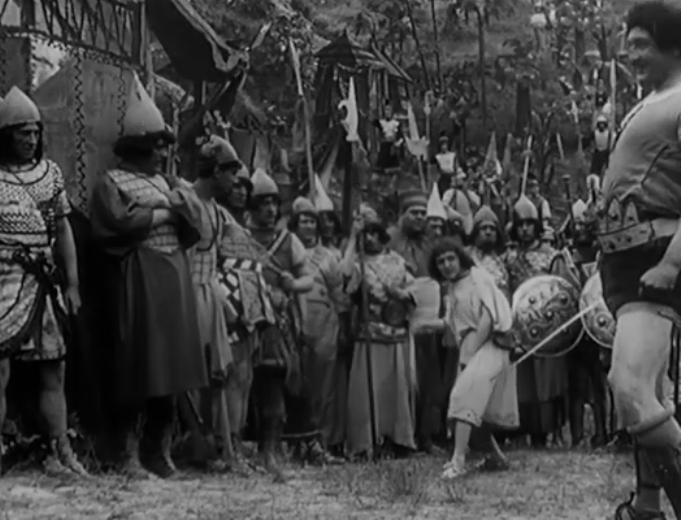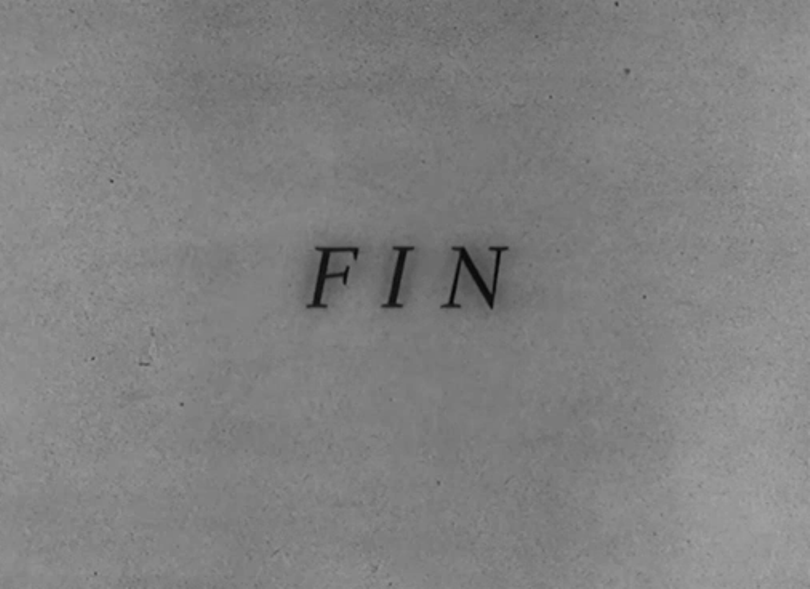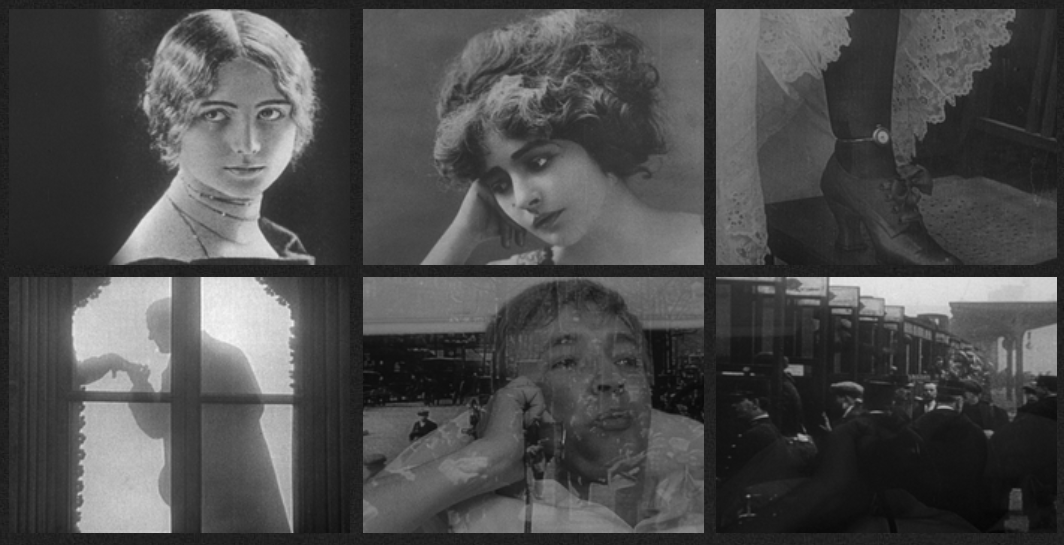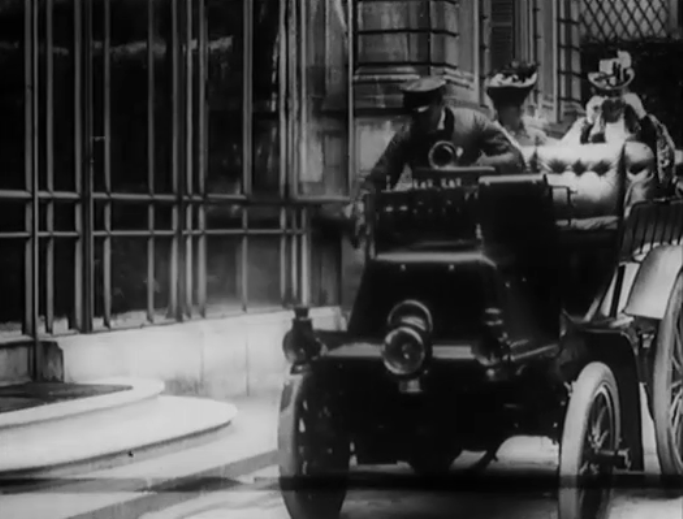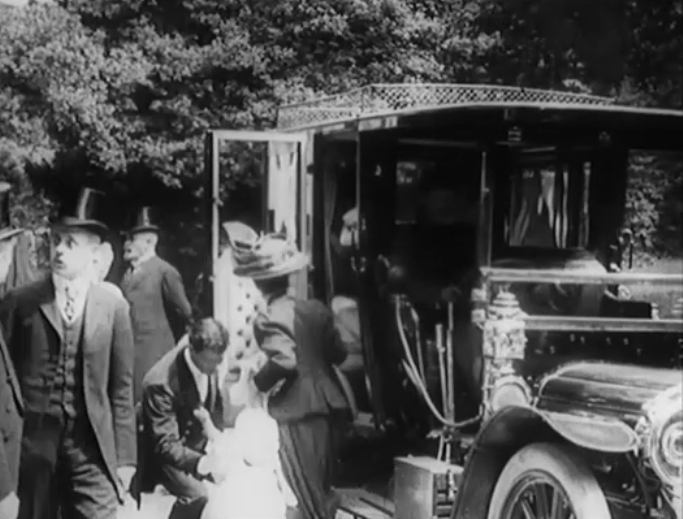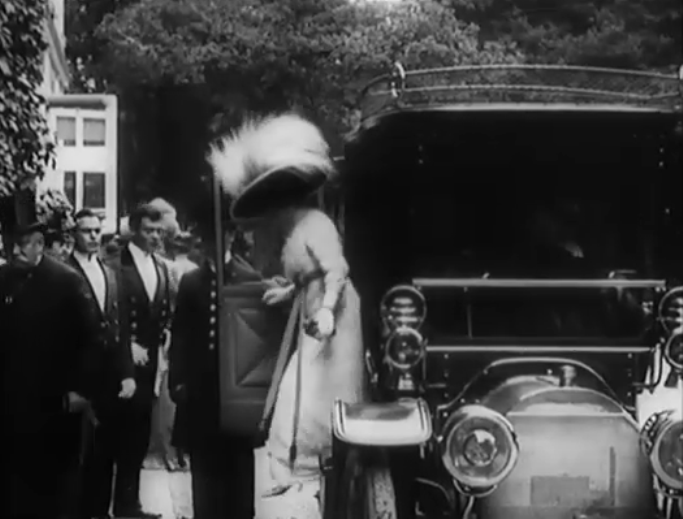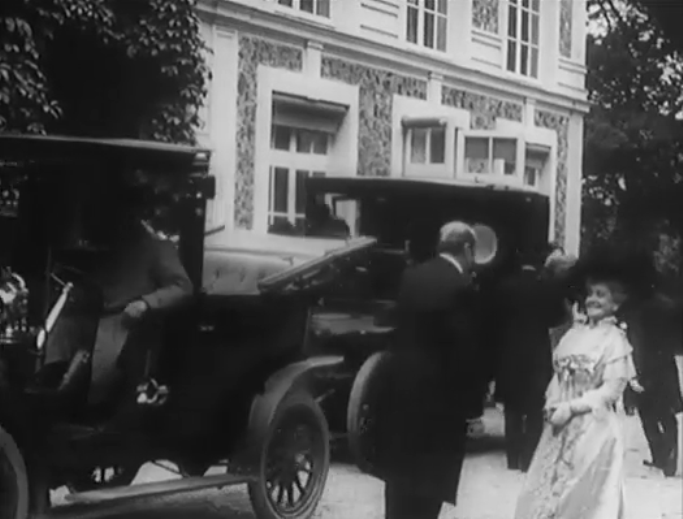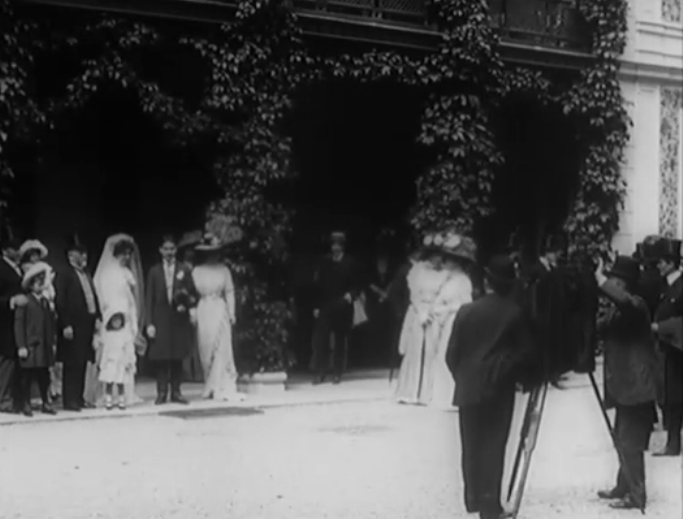|
Fiction as Document in Paris 1900 (Nicole Vedrès 1947)
This post, identifying images from fiction films used in Paris 1900, marks the publication of Suzanne Liandrat-Guigues's brilliant essay on Vedrès's film: Paris 1900: Kaléidoscope des jours, in the series 'Le Parti pris du cinéma' (Paris: L'Harmattan, 2018).
(I was delighted to be asked to contribute to this publication with a postface on the relation between Nicole Vedrès's work and several New Wave filmmakers, including Marker, Godard, Resnais and Truffaut.) |
|
According to the credits, more than 700 films contributed extracts to Vedrès's portrait of Paris between 1900 and 1914. This cannot be quite true, since my rough count of the shots in the film comes to around 720, and it is clear that a large number of shots come from the same sources. If I ventured to guess how many different sources were used I would say about half the number claimed, but an accurate calculation would require a lot more work than I have done.
|
Most of the film's sources are actualités, newsreels of some sort, but embedded among them are several extracts from fiction films. By my calculation there are about 60 shots from 25 different fictions, including féeries and scènes à truc. This post is a first attempt to isolate and identify these films. The work is far from complete, and I would be grateful to anyone who can identify images that I cannot.
I'll present the fiction films in the order in which they are inserted into Paris 1900.
I'll present the fiction films in the order in which they are inserted into Paris 1900.
On most occasions, these fictions are used to illustrate social practices with no effort to disguise their fictionality. In an early section on crime in the city, a shot of a man walking down a Paris street is followed by one of policemen rushing on bicycles in pursuit of thieves:
That in the first shot the man turns to look at the camera, and that in the second shot the policemen move with comic speed, is enough to tell us that the first is actualité and the second is fiction. Three more shots from the same fiction film follow, showing the policemen pursuing the thieves into a building and the thieves then escaping on the policemen's own bicycles:
Though I haven't seen the film I am almost certain that it is the 1907 Pathé comedy Arrestation difficile. The catalogue description of this film can be found here. As you can see, the last two shots above are identical. A jumpcut in Vedrès's film covers a substantial amount of business within that building. Here is Richard Abel's description of what is cut:
The shot showing the policemen running after the thieves is followed by two shots from a different film, Pathé's Samson moderne (1908):
Even though, in passing from the first to the second film, the pursued is now just one man, differently dressed, and the pursuers are now several policemen, the edit exactly matches the movement in each shot, illustrating the skill deployed by Vedrès's editors in the composition of Paris 1900. (The editor was Myriam Borsoutsky, assisted by Yannick Bellon; Alain Resnais assisted on the film but not with the editing, despite what is often said.)
This comic interlude is closed by a return to an actualité shot of the type that preceded it, in fact to the continuation of the same shot:
This comic interlude is closed by a return to an actualité shot of the type that preceded it, in fact to the continuation of the same shot:
This street is in Paris, somewhere near the rue du Temple, according to the narration. The streets in the two inserted fiction films, however, are not in Paris but in Vincennes and Montreuil respectively.
These two shots, included among several illustrating the leisurely life of fashionable women, look like they are from fictions, chiefly because the rooms look like sets, and I seem to recognise the actresses:
|
But the first of these is separately classified in the Gaumont Pathé Archives as '1910: La Mode à Paris: l'heure du thé - créations Jeanne Hallée, Diémert et Cie', so it is definitely an actualité. Likewise for the second image, which in the Gaumont Pathé Archives is headed 'Présentation de chapeaux chez une modiste'. The décor is familiar from Gaumont fictions, so the hat shop is actually a studio set.
The smiling woman looks to me like the mysterious Miss Edith who played in a number of Gaumont films in the early teens including Feuillade's La Hantise (right): |
A further seven fashion-centred items follow these two, though at 10.13 is inserted a Pathé 'scène à truc' from 1907, where a woman examines jewellery on which appear animated figures:
There are several extracts in Paris 1900 that are from high society dramas, only three of which have I been able to identify. About seventeen minutes in begins a section including at least 12 extracts from fictions:
|
Some of these can be matched as taken from the same film. The fourth and fifth go together, as do the eleventh and twelfth. The sixth, ninth and tenth are from Victorin Jasset's La Double Vie, an Éclair production from 1912 known in the U.S. as Convicted By Hypnotism. A summary of the plot can be found here, and here is a contemporary review, illustrated by the image right:
|
These are the other two shots from La Double Vie:
Vedrès inserts into this sequence an extract from Méliès's La Chrysalide et le papillon d'or (1901), as if it were the dream of the sleeping woman:
I first thought that the masked man looked a bit like Max Linder in Kyrelor bandit par amour (1910), but was not much convinced by my own suggestion:
On a recent trip to the CNC at Bois d'Arcy I came across the real source, a 1912 Lux production called La Maison blanche:
I can't identify any of the other dramas in this sequence. The most frustrating are the shot where a woman's lover pretends to be her doctor when the husband unexpectedly returns and the one where a woman is photographed while sleeping with her husband (presumably) looking on:
On the other hand, Max Linder does appear four minutes later, in a Turkish bath scene from Max jockey par amour:
This scene from a fiction passes by so quickly we don't notice that it is not an actualité. Something similar happens thirteen minutes later, when we are presented with a view of women sitting a café terrace:
Vedrès cut the shot before the approaching cab stops. If she hadn't we would have seen Max Linder descend from it and realised that this is fiction - Première sortie d'un collégien (1905), Linder's first film. Four minutes later a similar shot from the same film appears, but this time we do see Max get out of the cab:
Max and his companions enter the restaurant, but the interior we then see is from a completely different film. This is Jasset's La Bouquetière de Montmartre (1913), starring Josette Andriot:
This looks like a shot from one of the films in the earlier montage of society dramas. The necklace Andriot is wearing is the same as the one she is wearing here:
But then again Andriot wears this necklace in the 1913 film Le Mauvais Génie, which is not the source for the two images above. Probably Andriot liked to wear it in all of her films from this time.
We see her again with the moustached man from above a little later in this sequence of Paris 1900:
We see her again with the moustached man from above a little later in this sequence of Paris 1900:
This is, I think, from one of the Protéa films. Here she is from the first of them in something similarly stripey:
In Paris 1900 there follows a shot of a man crying as he listens to the performance of two female musicians - again a film I can't identify:
This leads to a sequence about what might be seen in theatres like the Moulin Rouge, illustrated firstly by extracts from Pathé féeries. The first is Segundo de Chomon's Les Glaces merveilleuses (1907), the second I haven't identified (the coq logo identifies it as a Pathé film):
Among the various views of music hall stars reproducing their acts for the camera is an extract from Ferdinand Zecca's comic fantasy Le Royaume nain de Lilliput contre Gigas-le-long, Prince des géants (1913), starring Maurice Chevalier. Less than a minute later we see the famous footage of Zecca showing a strip of film to Charles Pathé:
This is then followed by a scene at the cinema, with on the screen almost two minutes of the 1905 Pathé fantasy Rêve à la lune, also known as L'Amant de la lune.
The shot of a man arriving to watch this film is from, not a Pathé film, but Louis Feuillade's 1909 Gaumont drama La Vengeance posthume du Docteur William, where a murderer has been secretly filmed in the act and is exposed by the screening of the evidence:
Footage of Sarah Bernhardt makes a transition from cinema to theatre, but there is one shot from her film work, the death scene in La Dame aux camélias (1912):
A number of 'films d'art' provide illustrations for the commentary on theatre:
These films and their actors are all named in the commentary; twenty-seven minutes from the end, they are, I think, the last fragments of fiction to feature in Paris 1900.
For François Truffaut's use of images from Paris 1900 in Jules et Jim, see my post here.
Appendix: generic actualities
I have chiefly been interested in how shots from fictions become detached from their narratives to serve as generic documents, but I have noticed in passing a couple of instances where certain actualités go in the other direction. For example, at 26 minutes the narrator imagines a duchess heading off to 'one of those high society weddings that make the whole Faubourg Saint Germain tremble with joy'. The accompanying images are of women setting off in a motor car and of other women arriving in other motor cars:
These are followed by images of a wedding, accompanied by jaunty music without commentary. All of these images are detached from their contexts - no mention is made of the fact that the wedding we are watching is that of Gustave Eiffel's daughter in 1909:
